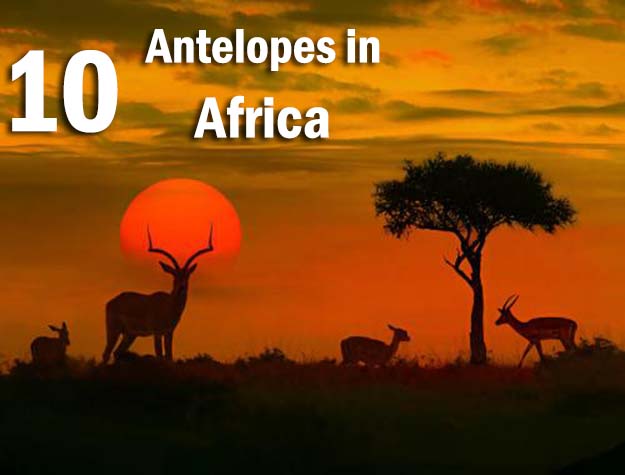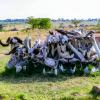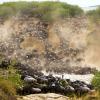10 antelopes in Africa [UPDATED]
What exactly is an antelope?
An antelope in Africa is a type of herbivorous mammal belonging to the family Bovidae, which also includes cattle, goats, and sheep. Antelopes are characterized by their slender build, long legs, and distinctive horns, which are present in both males and females of most species. They are well adapted to living in a variety of habitats, including grasslands, woodlands, and deserts, and are known for their speed and agility, which help them evade predators. Antelopes vary greatly in size, ranging from small species like the dik-dik to large species like the eland and kudu. They play a crucial role in the ecosystems they inhabit as both prey and seed dispersers.
Antelope vs deer
While they may appear similar at first glance, deer and antelope actually belong to separate families. Antelopes are part of the Bovidae family, while deer belong to the Cervidae family.
The primary physical distinction between the two groups lies in their headgear: male deer possess antlers, which they shed and regrow annually, whereas antelopes feature permanent horns.
Antelope vs gazelle
Gazelles belong to the Bovidae family, specifically within the genus Antilopinae, making them a subgroup of antelopes. Essentially, all gazelles are classified as antelopes, but not all antelopes are gazelles.
The primary distinctions between gazelles and other african deer family antelopes lie in their size and horn characteristics:
Gazelles are typically smaller in stature and weight compared to other antelope species.
Both male and female gazelles usually possess horns, whereas in non-gazelle antelopes, horns are typically present only in males.
10 African Antelopes:
-
Cape Buffalo

The Cape Buffalo is a large and robust bovine species found in sub-Saharan Africa. With its distinctive curved horns and dark coat, it inhabits various habitats including savannas and grasslands. Cape Buffaloes are social animals, forming large herds with a dominance hierarchy led by older bulls. They are herbivores, feeding primarily on grasses, and are known for their unpredictable and sometimes aggressive behavior. While they are classified as "Least Concern" in terms of conservation status, they face threats from habitat loss, hunting, and diseases. Cape Buffaloes hold cultural significance in African societies and are prized as big game animals for trophy hunting.
-
Dik-dik
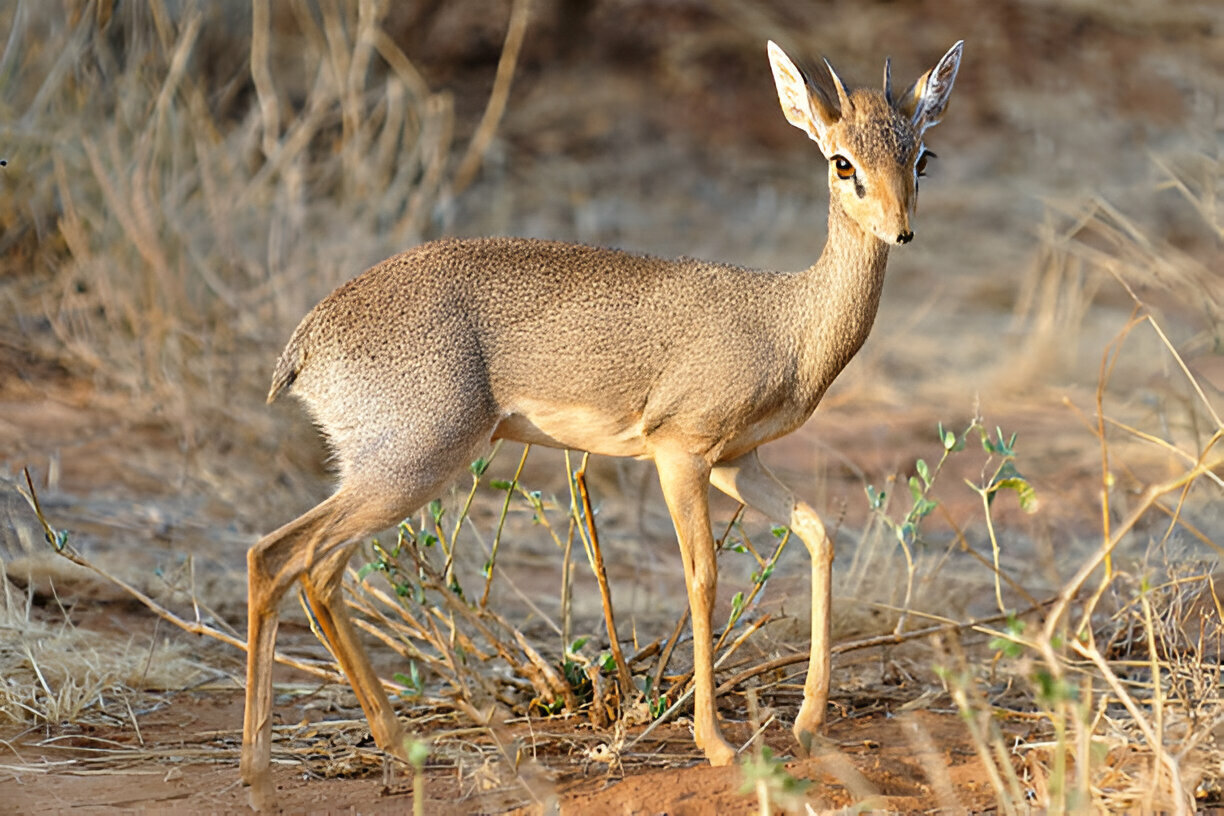
The dik-dik is a small african antelope found in Eastern and Southern Africa. It has a distinctively small size, reaching about 30-40 centimeters tall and weighing 3-6 kilograms. Its notable features include a long nose and large eyes. Dik-diks are mainly browsers, feeding on leaves and fruits, and they are active during dawn and dusk. They form monogamous pairs and rely on speed and agility to escape predators. While not globally threatened, they face local challenges such as habitat loss and hunting.
-
Okapi
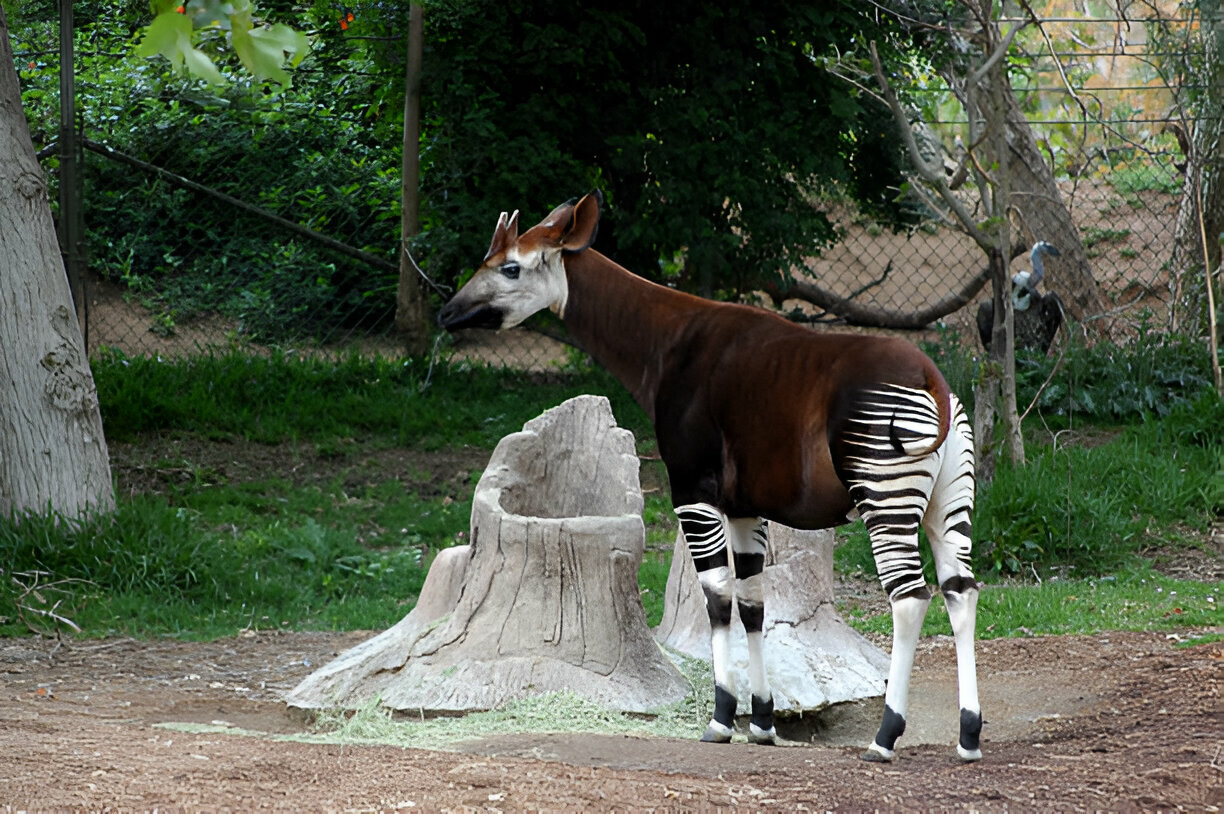
The okapi is a rare and elusive mammal native to the dense rainforests of the Democratic Republic of Congo in Central Africa. Resembling a cross between a giraffe and a zebra, it has a dark reddish-brown coat with striking horizontal white stripes on its hindquarters and legs. The okapi possesses a long, prehensile tongue used for grasping leaves and buds from trees and shrubs. It is primarily solitary and largely crepuscular, meaning it is most active during dawn and dusk. Despite its distinctive appearance, the okapi remained unknown to Western science until the early 20th century. Today, it is considered a symbol of conservation and the importance of preserving Congo's biodiversity.
-
Oryx

The oryx is a medium to large-sized antelope native to arid regions of Africa and the Arabian Peninsula. It is known for its long, straight horns and distinctive black and white facial markings. Oryxes have a pale coat that helps reflect sunlight, enabling them to withstand high temperatures in their desert habitats. They are well-adapted to dry environments, obtaining most of their water from the vegetation they consume. Oryxes are primarily grazers, feeding on grasses and herbs, and are capable of surviving for long periods without drinking water. They form small herds or live in solitary pairs and are preyed upon by large carnivores such as lions and hyenas. Oryxes are valued for their resilience and are considered symbols of strength and endurance in their native habitats.
-
Eland

The eland is a large antelope from Africa, known for its impressive size and distinctive spiral horns. It inhabits various habitats including savannas and woodlands. Elands are primarily grazers, feeding on grasses and herbs, and are active during the day. They form herds of varying sizes and breed during the rainy season, giving birth to a single calf. While not globally threatened, elands face localized challenges such as habitat loss and poaching. Overall, they are an iconic species in African ecosystems, valued for their size and role as prey for predators.
-
Giraffe

The giraffe is the tallest land animal, known for its long neck and legs. Found in savannas and woodlands of Africa, it feeds primarily on leaves from trees and shrubs. Giraffes are social animals, living in loose groups called towers. They have distinctive spotted coats and ossicones (horn-like structures) on their heads. Males engage in necking battles to establish dominance. Despite their size, giraffes are vulnerable to habitat loss and poaching. They play a vital role in ecosystems by browsing on vegetation and spreading seeds.
-
Impala

The impala is a medium-sized antelope found in Southern and Eastern Africa. It's known for its reddish-brown coat and distinctive black markings on its face, ears, and tail. Impalas are agile runners and can jump long distances. They inhabit various habitats including savannas and woodlands. Impalas form large herds, with males establishing territories and competing for dominance during breeding season. They are herbivores, feeding on grasses, leaves, and shoots. Impalas are preyed upon by a variety of predators including lions, leopards, and cheetahs. They play a crucial role in the ecosystem as both prey and seed dispersers.
-
Kudu
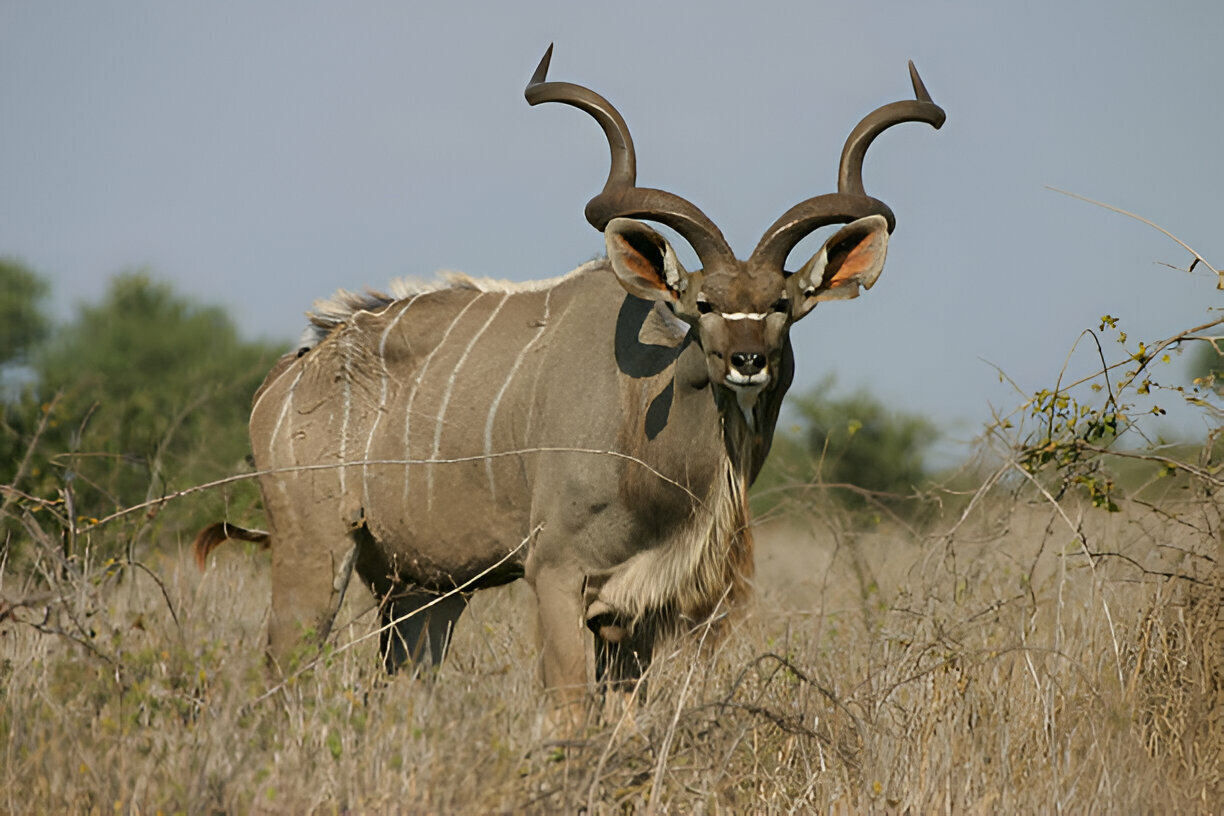
The kudu is a large antelope species found in sub-Saharan Africa, known for its elegant spiral horns and distinctive markings. It inhabits a variety of habitats including woodlands, savannas, and bushlands. Kudus have a grayish-brown coat with white stripes along their sides and a chevron-shaped marking on their face. They are primarily browsers, feeding on leaves, shoots, and fruits. Kudus are solitary or form small groups, with males typically being more solitary. They are preyed upon by large carnivores such as lions and hyenas. Kudus play an important role in their ecosystems as browsers and prey species.
-
Roan

The roan antelope is a large and majestic antelope species native to savannas and woodlands of Africa. It is known for its distinctively reddish-brown coat and long, ridged horns that curve slightly backward. Roan antelopes are herbivores, primarily grazing on grasses and occasionally browsing on leaves and shrubs. They form small herds led by a dominant male, with females and their young typically comprising the majority of the group. Roan antelopes are preyed upon by large carnivores such as lions and hyenas. They play a crucial role in maintaining the balance of their ecosystems as both grazers and prey species.
-
Steenbok

The steenbok is a small antelope species found in various habitats across southern and eastern Africa. It is known for its compact size, standing at about 45-60 centimeters tall at the shoulder, and its reddish-brown coat. Steenboks have large, dark eyes and small, straight horns on males. They are solitary animals, often found in pairs or alone, and are primarily browsers, feeding on leaves, shoots, and fruits. Steenboks are preyed upon by a variety of predators including leopards, cheetahs, and eagles. They are adapted to arid environments and are capable of surviving without drinking water for extended periods.
Here's a list of African antelopes:
- Addax (Addax nasomaculatus)
- Ader's Duiker (Cephalophus adersi)
- Beira (Dorcatragus megalotis)
- Blesbok (Damaliscus pygargus phillipsi)
- Bongo (Tragelaphus eurycerus)
- Bushbuck (Tragelaphus scriptus)
- Common Duiker (Sylvicapra grimmia)
- Dik-dik (Madoqua kirkii)
- Eland (Taurotragus oryx and T. derbianus)
- Gerenuk (Litocranius walleri)
- Giant Eland (Taurotragus derbianus)
- Gazelle (Various species)
- Gemsbok (Oryx gazella)
- Gerenuk (Litocranius walleri)
- Greater Kudu (Tragelaphus strepsiceros)
- Grysbok (Raphicerus melanotis)
- Impala (Aepyceros melampus)
- Klipspringer (Oreotragus oreotragus)
- Lechwe (Kobus leche)
- Lesser Kudu (Tragelaphus imberbis)
- Mountain Nyala (Tragelaphus buxtoni)
- Mountain Reedbuck (Redunca fulvorufula)
- Nyala (Tragelaphus angasii)
- Oribi (Ourebia ourebi)
- Roan Antelope (Hippotragus equinus)
- Sable Antelope (Hippotragus niger)
- Sitatunga (Tragelaphus spekii)
- Springbok (Antidorcas marsupialis)
- Steenbok (Raphicerus campestris)
- Suni (Neotragus moschatus)
- Topi (Damaliscus lunatus)
- Waterbuck (Kobus ellipsiprymnus)
- Wildebeest (Connochaetes taurinus)
- Yellow-backed Duiker (Cephalophus silvicultor)
- Zebra (Equus zebra)
This is not an exhaustive list, as there are many more species and subspecies of antelopes found across Africa.

